UPSC Daily Current Affairs - 20th June 2024 | Current Affairs & Hindu Analysis: Daily, Weekly & Monthly PDF Download
GS3/Economy
EUROPEAN COMMISSION (EC)
Source: India Times

Why in news?
The European Commission (EC) has proposed anti-dumping duties on Indian optical fibre cable (OFC) manufacturers. If implemented, the duties would increase the cost of Indian OFC exports, potentially limiting their competitiveness in the European market. India exported nearly Rs 39,600 crore worth of OFC in 2024, with Europe being a major destination.
About EUROPEAN COMMISSION (EC) :
- The European Commission (EC) is a crucial institution within the European Union (EU).
- It serves as the EU's executive arm, overseeing day-to-day operations and policy implementation.
Composition:
- The EC consists of a College of Commissioners, with each member representing one of the 27 EU member states.
- The College of Commissioners is composed of the President of the Commission, eight Vice-Presidents, including three Executive Vice-Presidents, the High Representative of the Union for Foreign Affairs and Security Policy, and 18 Commissioners, each responsible for a portfolio.
- The day-to-day running of Commission business is performed by its staff (lawyers, economists, etc.), organised into departments known as Directorates-General (DGs), each responsible for a specific policy area.
What does the Commission do?
- Proposes new laws: The Commission is the sole EU institution tabling laws for adoption by the Parliament and the Council that protect the interests of the EU and its citizens on issues that can't be dealt with effectively at the national level.
- Manages EU policies & allocates EU funding:
- Sets EU spending priorities, together with the Council and Parliament.
- Draws up annual budgets for approval by the Parliament and Council.
- Supervises how the money is spent, under scrutiny by the Court of Auditors.
- Enforces EU law:
- Together with the Court of Justice, ensures that EU law is properly applied in all the member countries.
- Represents the EU internationally:
- Speaks on behalf of all EU countries in international bodies, particularly in areas of trade policy and humanitarian aid.
- Negotiates international agreements for the EU.
GS-III/Environment & Biodiversity
Pobitora Wildlife Sanctuary
Source: Indian Express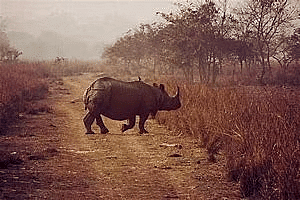
Why in news?
The monsoon has brought a measure of relief to animals especially the one-horned rhinoceros in dealing with extreme heat.
About Pobitora Wildlife Sanctuary
- Pobitora Wildlife Sanctuary boasts the highest density of one-horned rhinos globally, second only to Kaziranga National Park in Assam.
- Often dubbed as 'Mini Kaziranga,' Pobitora shares a similar landscape and vegetation to its renowned counterpart.
- The sanctuary shelters various endangered species, including one-horned rhinoceros, leopards, leopard cats, fishing cats, jungle cats, feral buffaloes, wild pigs, and Chinese pangolins.
- Approximately 72% of Pobitora's area comprises a wet savannah dominated by Arundo donax and Saccharum grasses, while the rest is covered by water bodies.
About One-Horned Rhino
- IUCN Red List Status: Vulnerable.
- Habitat: Rhinos are mainly found in Assam, West Bengal, and Uttar Pradesh. Assam has an estimated 2,640 rhinos in four protected areas, i.e., Pobitora Wildlife Reserve, Rajiv Gandhi Orang National Park, Kaziranga National Park, and Manas National Park.
Note:
- 2,400 of them are in the Kaziranga National Park and Tiger Reserve (KNPTR).
GS1/History & Culture
Revival of Ancient Nalanda Mahavihara
Source: Times of India
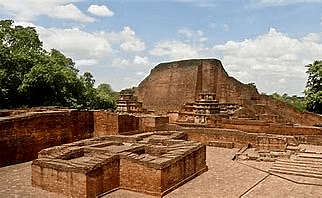
Why in news?
The Prime Minister of India inaugurated the new campus of Nalanda University in Rajgir, Bihar. The new campus is near the ancient ruins of Nalanda University, which was established through the Nalanda University Act 2010, enacted following a decision made at the 2nd East Asia Summit in the Philippines in 2007.
The Ancient Nalanda Mahavihara
- Nalanda was a renowned Buddhist mahavihara (great monastery) in ancient and medieval Magadha (modern-day Bihar), near the city of Rajagriha (now Rajgir) and about 90 kms southeast of Pataliputra (now Patna).
- It was established by Kumargupta I - the ruler of Gupta Empire (c. 3rd to 6th century CE), and is considered to be among the greatest centres of learning in the ancient world.
- It played a vital role in promoting the patronage of arts and academics during the 5th and 6th century CE, a period that has since been described as the "Golden Age of India" by scholars.
- The chronicles of seventh-century Chinese traveler Hsuan Tsang provide the most detailed description of ancient Nalanda.
- After Guptas, Nalanda continued to thrive with the support of the rulers of the Pala Empire and may have been attacked (in 1190s) and damaged by Muhammad Bakhtiyar Khalji - a Turko-Afghan military general.
- After being lost for six centuries, the university was rediscovered in 1812 by Scottish surveyor Francis Buchanan-Hamilton.
- Later (in 1861), it was officially identified as the ancient university by Sir Alexander Cunningham.
- The current site of Nalanda is a UNESCO World Heritage Site and the Government of India enacted a law in 2010 to revive the famous university.
Revival of Nalanda University
- In a bid to revive its legacy, the idea to re-establish Nalanda University was proposed by former president Dr. APJ Abdul Kalam in 2006.
- In 2007, the proposal to re-establish Nalanda was endorsed at the East Asia Summit in Mandaue, Philippines, and was reiterated in the East Asia Summit of 2009, in Hua Hin, Thailand.
- This vision gained momentum with the passing of the Nalanda University Bill in 2010 in the Indian Parliament, leading to its operational launch in 2014 from a temporary location near Rajgir.
- Former president Pranab Mukherjee laid the foundation stone for the permanent campus in 2016 at Pilkhi village, Rajgir.
Features of the New Nalanda University Campus
- The architecture of the university, situated on a sprawling 455 acres of land, fuses both modern and ancient styles.
- The new campus integrates eco-friendly architecture, ensuring a net-zero carbon footprint.
- The university currently operates six schools covering Buddhist studies, historical studies, ecology, sustainable development, languages, literature, and international relations.
- Additionally, it hosts four centers specializing in Bay of Bengal Studies, Indo-Persian Studies, Conflict Resolution, and a Common Archival Resource Center.
Highlights of the PM's Address at the New Nalanda University Inauguration
- Nalanda University is a proclamation of the fact that knowledge cannot be destroyed by fire.
- Nalanda University would add a new dimension to the idea of world brotherhood and become the identity of India's development journey.
- The Renaissance of Nalanda will tell the world about India's capacity and will help India become a global hub for knowledge and education.
- History was proof that all developed countries became economic and cultural leaders only after they made a mark in the field of education.
GS-II/Polity
NHRC Notice to Centre on Worker Rights Violation in Haryana
Source: Economic Times
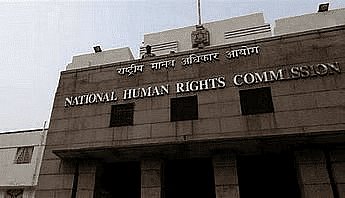
Why in news?
The National Human Right Commission (NHRC) issued notice to the Centre over reports from a Amazon company's warehouse in Haryana's Manesar. Employees were allegedly forced to pledge not to take toilet or water breaks until unloading six trucks post 30-minute tea break.
NHRC's Observations and Actions
- NHRC views this as a serious human rights violation, potentially breaching labour laws and Ministry guidelines.
- Notice was issued to the Secretary, Union Ministry of Labour and Employment for a detailed report within a week.
About National Human Rights Commission (NHRC)
- Establishment
- A Statutory Body;
- Established under the Protection of Human Rights Act, 1993.
- Functions
- Inquire into any violation of human rights
- Recommend immediate interim relief to victims or their families
- Intervene in court proceedings involving human rights violations
- Review constitutional and legal safeguards for human rights
- Study international instruments on human rights
- Promote human rights literacy
- Support the efforts of NGOs working in the field of human rights
- Powers
- Regulate its own procedure
- Possess all the powers of a civil court
- Proceedings have a judicial character
- Chairperson
- Must be a former Justice of the Supreme Court or Chief Justice of the Supreme Court
- Appointed by the President of India
- Members
- Four full-time members;
- Chairperson: former Supreme Court Justice or Chief Justice;
- Other Member: former Judge of the Supreme Court; former Chief Justice of a High Court;
- Three Members: with knowledge or experience in human rights, including at least one woman;
- Seven ex-officio members: Chairpersons of National Commissions and the Chief Commissioner for Persons with Disabilities.
- Appointment
- Appointed by the President, based on a committee recommendation including various officials
- Consultation with the Chief Justice of India for judicial appointments
- Removal
- Removal by order of the President of India
- Consultation with the Supreme Court before removal
- Terms of Office
- Hold office for a term of three years or until the age of 70
- Ineligibility for further government employment after office
- Eligible for reappointment
- Salaries
- Determined by the Central government
- Reporting
- Submits annual or special reports to the Central government and the concerned State government
- Reports laid before the respective legislatures, along with a memorandum of action taken on the recommendations
- Limitations
- The commission is not empowered to inquire into any matter after the expiry of one year from the date on which the act constituting the violation of human rights is alleged to have been committed
- Functions are recommendatory in nature, with no power to punish or award relief to violators
- Limited role concerning armed forces violations
Government Initiatives for Worker Welfare in India:
- Constitutional Framework
- Labour falls under the Concurrent List, allowing both Central and State governments to enact laws.
- Articles 14, 16, and 39(c) ensure equality and welfare principles.
- Judicial Interpretation under Randhir Singh vs Union of India (1982)
- Upholds 'Equal pay for Equal work' through constitutional articles, promoting fairness in employment.
- Legislative Framework
- Introduction of 4 labour codes:
- Code of Wages, 2019: Standardizes wage payments across sectors.
- Industrial Relations Code, 2020: Consolidates laws related to industrial disputes and trade unions.
- Social Security Code, 2020: Expands social security benefits coverage for workers.
- Occupational Safety, Health and Working Conditions Code, 2020: Ensures safety and welfare standards in workplaces.
- Introduction of 4 labour codes:
- "Shramev Jayate" Initiative
- Launched in 2014 to maximize benefits for workers through enhanced welfare initiatives.
- Maternity Benefit Amendment Act, 2017
- Increases paid maternity leave from 12 to 26 weeks, supporting maternal health and childcare.
PYQ
[2015] "Success of 'Make in India' programme depends on the success of 'Skill India' programme and radical labour reforms." Discuss with logical arguments.
[2011] Consider the following:
1. Right to education.
2. Right to equal access to public service.
3. Right to food.
Which of the above is/are Human Right/Rights under "Universal Declaration of Human Rights"?
A)1 only
B)1 and 2 only
C)3 only
D)1, 2 and 3
GS3/Economy
CIL Awards Underground Mines to Private Players to Bolster Revenue Stream
Source: Deccan Herald
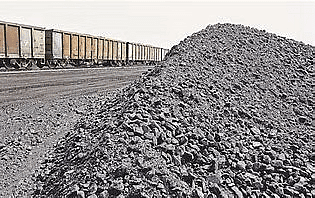
Why in News?
In an effort to bolster its revenue stream, national miner Coal India Ltd (CIL) has awarded its abandoned coal mines to private players on a revenue-sharing model.
CIL had identified 23 coal mines — most of them underground ones — which were closed or discontinued for technical or financial reasons.
About Coal (Distribution across World & India)
Coal in India (Types, Problems, India’s Dependence on Coal, Revenue Sharing Model, etc.)
News Summary
Distribution of Coal Across the World:
- Coal is a widespread resource for energy and chemicals.
- The quantities of proven coal reserves in the world are typically shown in Millions of Tons of Coal Equivalent (MTCE).
- Nearly 75 per cent of the world’s recoverable coal resources are controlled by five countries:
- United States (~22 per cent)
- Russia (~15 per cent)
- Australia (~14 per cent)
- China (~13 per cent)
- India (~10 per cent)
India’s Coal Reserves:
- Commercial coal-mining industry has been in operation since 1774, launched by the East India Company along the Damodar River in West Bengal.
- 70 per cent of India’s coal supply comes from the states of Jharkhand, Chhattisgarh, Odisha, West Bengal and Madhya Pradesh.
- State-owned Coal India Limited has a virtual monopoly on coal mines in India, which produce roughly 75 per cent of the coal burned in India’s coal-fired power stations.
Types of Coal in India:
- India has four primary types of coal based on their carbon content and energy potential. Each type of coal varies in its properties and uses.
Problems With Coal Found in India:
- High Ash Content:
- Issue: Indian coal generally has high ash content, ranging from 20% to 45%.
- Impact: High ash content reduces the calorific value, increasing the cost of coal handling and transportation, and results in more waste and pollution.
- Lower Calorific Value:
- Indian coal has a lower calorific value compared to imported coal.
- This necessitates burning more coal to produce the same amount of energy, leading to higher emissions and inefficiencies in power generation.
- Limited Coking Coal:
- India has a shortage of high-quality coking coal, which is essential for steel production.
- This necessitates the import of coking coal, increasing costs and dependence on foreign sources.
- Environmental Concerns:
- Coal mining and combustion contribute significantly to air pollution, water contamination, and deforestation.
- These environmental issues have severe health implications and contribute to climate change, making coal less sustainable in the long term.
India’s Dependence on Coal for Energy Supply:
- While renewable energy capacity is dramatically increasing, coal still provides around 70 per cent of the country’s electricity.
- Coal is expected to account for at least 21 per cent of India’s electricity requirements even by 2050.
- Easily Available Source of Power
- Alternatives like nuclear energy have been hampered by high costs and safety concerns.
- India’s Developmental Needs
- International Energy Agency (IEA) predicts that between 2020 and 2040, India will have the largest growth in energy demand of any country in the world.
- To meet this demand, India will need to rely on a variety of energy sources—both conventional and renewable.
- Source of Employment
- Around 4 million people in India are employed either directly or indirectly in the coal sector.
- Other than active workers, another 500,000 Indians rely on the coal sector for their pensions.
- Source of Revenue for the Government
- Coal India Limited is the largest coal mining company in the world.
- The coal sector is a major source of revenue for States and the Central Government.
Revenue Sharing Model for Coal Plants:
The revenue sharing model involves collaboration between Coal India Ltd (CIL) and private players.
- Revenue Sharing Framework Structure: Private players are awarded contracts to operate abandoned or underutilized coal mines on a revenue-sharing basis with Coal India Ltd (CIL).
- Revenue Split: The revenue generated from coal sales is shared between CIL and the private operators based on agreed terms.
- Identification of Mines Selected Mines: CIL identified 23 abandoned or discontinued mines, mostly underground, with a cumulative peak-rated capacity of 34.14 million tonnes per annum (MTPA) and estimated reserves of 635 million tonnes (MT).
- Operational Mechanism Mine Developer and Operator (MDO): Private operators, also known as Mine Developer and Operators (MDOs), are responsible for the coal extraction and production process.
- Freedom in Operations: MDOs have the autonomy to choose their technology, methods, and machinery for coal extraction.
- Auction Process Market-Driven Pricing: Coal mined from these sites is sold at market-driven prices through an auction process managed by the operators on behalf of the authority.
News Summary:
- Coal India Ltd has assigned its abandoned coal mines to private players on a revenue-sharing model to boost domestic production and reduce imports.
- Out of 23 identified mines, which have a combined capacity of 34.14 MTPA and reserves of 635 MT, most were closed for technical or financial reasons.
- This initiative, aimed at increasing industry participation, will see 75% of coal excavation outsourced to private operators, with a goal to reach 90% in five years.
- While the revenue impact is modest (10-12%), the focus is on quicker production turnaround and environmental benefits.
- These mines will sell coal at market prices through auctions and support coal gasification projects.
- CIL reported a 7.28% increase in coal production, reaching 160.25MT, and a 27% growth in production from captive and commercial mines.
GS-III/Science and Technology
CRISPR Cas9 Gene Therapy for Sickle Cell Disease
Source: The Hindu
Why in News?
India is close to developing a gene therapy using CRISPR-Cas9, a gene-editing tool for sickle cell disease (SCD).
SCD is a genetic blood disorder prevalent among the Scheduled Tribes.
What is Sickle Cell Disease?
- Sickle cell disease (SCD) is a group of inherited blood disorders caused by a genetic mutation in the hemoglobin-β gene located on chromosome 11.
- This mutation results in defective hemoglobin, which forms rod-like structures after releasing oxygen.
- As a result, red blood cells become rigid and assume a sickle shape.
- The disease is in an autosomal recessive pattern, meaning both parents must carry the abnormal gene for a child to inherit it.
- Symptoms may not manifest immediately in newborns but can include extreme tiredness, fussiness, swollen hands and feet, and jaundice.
Implications:
- Mis-shapen RBCs block small blood vessels, leading to impaired blood flow and causing chronic anemia.
- Individuals with SCD often experience acute pain episodes, severe bacterial infections, and tissue damage due to inadequate blood supply.
Treatment:
- Presently treatment includes medications for pain relief and regular blood transfusions to replace damaged red blood cells.
- In rare cases, a bone marrow stem cell transplant, which carries significant risks, is recommended.
Eliminating Sickle Cell Disease: Global and National Context
- This progress follows the approval of CRISPR-Cas9 technology by the U.S. FDA for a cell-based gene therapy to treat sickle cell disease in December 2023.
- One of the main challenges for India is to develop a cost-effective therapy, as part of its mission to eradicate sickle cell disease by 2047, launched by the Prime Minister in July 2023.
Back2Basics: CRISPR-Cas9 Gene Editing
- CRISPR-Cas9 stands for Clustered Regularly Interspaced Short Palindromic Repeats and CRISPR-associated protein 9.
- It is a technology that allows geneticists and researchers to edit parts of the genome by altering sections of the DNA sequence.
Mechanism
- The process begins with the design of a guide RNA (gRNA) that matches the DNA sequence where an edit is needed.
- Once inside the cell, the Cas9 enzyme and the gRNA form a complex that can identify and bind to the target DNA sequence.
- The Cas9 then cuts the DNA at this location.
- After the DNA is cut, the cell's natural repair mechanisms can be harnessed to add or remove genetic material, or to make specific changes to the DNA.
PYQ:
Consider the following statements in the context interventions being undertaken under Anaemia Mukt Bharat Strategy:
- It provides prophylactic calcium supplementation for pre-school children, adolescents, and pregnant women.
- It runs a campaign for delayed cord clamping at the time of childbirth.
- It provides for periodic deworming to children and adolescents.
- It addresses non-nutritional causes of anaemia in endemic pockets with a special focus on malaria, hemoglobinopathies, and fluorosis.
GS2/International Relations
India's $10 Million Contribution to Global Digital Health Initiative Delayed
Source: Indian Express
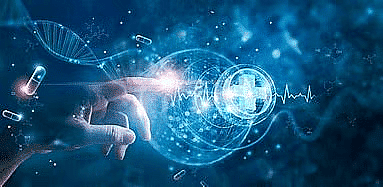 Why in news?
Why in news?
The Globljal Initiative on Digital Health (GIDH) was launched during India's G20 Presidency at the Health Ministers' meeting in Gujarat in August 2023. Later, it became part of the New Delhi declaration. India pledged a $10 million contribution as a seed fund. The GIDH officially started in February 2024. However, India has yet to fulfill its $10 million commitment due to the Department of Economic Affairs (Ministry of Finance) not approving the contribution.
Digital health
- Digital health refers to the use of technology, such as mobile devices, software applications, and other digital tools, to improve health and healthcare delivery.
- It is a multidisciplinary concept that includes concepts from an intersection between technology and healthcare.
- It encompasses a wide range of technologies and services, including telemedicine, electronic health records, wearable devices, health information exchange, and more.
India's CoWIN, UNICEF's RapidPro, and FamilyConnect are notable examples:
- The real-time information platform, RapidPro, is a core solution in UNICEF's digital health portfolio.
- UNICEF's FamilyConnect sends targeted life cycle-based messages via SMS to pregnant women, new mothers, heads of households, etc.
Significance of digital health:
- Empowers patients by providing a holistic view of patient health through data access and control.
- Digital tools facilitate disease treatment, prevention, and management of chronic conditions.
- Other benefits include reducing inefficiencies, improving access, reducing costs, increasing quality, and personalizing medicine for patients.
- Digital health supports universal health coverage targets by ensuring availability, accessibility, affordability, and equity of health services.
Challenges of digital health:
- Equitable access is challenging, particularly for low- and middle-income countries due to issues like low digital literacy and internet penetration.
- Ethical challenges related to privacy, security, and data ownership arise with increasing digitization of healthcare.
- Data management faces challenges due to the diversity of data sources and systems.
GIDH aims:
- ALIGN efforts to support the Global Strategy on Digital Health 2020-2025.
- SUPPORT quality assured technical assistance for developing interoperable systems aligned with global standards.
- FACILITATE the use of digital transformation tools for governments.
Pillars of GIDH:
- Investment tracker.
- Ask tracker to identify needed technologies.
- A library of available digital tools.
- A platform for knowledge-sharing to implement these technologies at scale.
Strategies employed by GIDH:
- Developing priority-driven investment plans for digital health transformation.
- Improving reporting and transparency of digital health resources.
- Encouraging knowledge exchange and collaboration to accelerate progress.
- Providing technical and financial support for implementing the Global Strategy on Digital Health 2020-2025.
GS3/Environment
STRATEGIC IMPERATIVE AND ENVIRONMENT CONCERN IN GREAT NICOBAR PROJECT
Source: Indian Express

Why in news?
The proposed Rs 72,000-crore infra upgrade at the Great Nicobar Island has raised concerns about the impact on the island's indigenous inhabitants and fragile ecosystem. The Congress party is demanding the immediate suspension of all clearances for the project and a thorough review.
Key Takeaways
- Great Nicobar Island is the southernmost and largest of the Nicobar Islands, characterized by tropical rainforests and diverse wildlife.
- Indira Point on the island marks India's southernmost point, located close to Sumatra, Indonesia.
- The island hosts two national parks, a biosphere reserve, tribal populations, and unique ecosystems.
- Its natural features include tropical wet evergreen forests, mountain ranges, and coastal plains.
- The leatherback sea turtle is a significant species found on the island.
Project Details
- The project for the holistic development of Great Nicobar Island was initiated based on a report by NITI Aayog.
- A pre-feasibility report highlighted the strategic location of the island for regional connectivity.
- The project aims to enhance the island's infrastructure and participation in the maritime economy.
Environmental Concerns
- Opponents of the project argue that it threatens the rights of tribal populations and could harm the island's ecology.
- Critics are concerned about the potential impact on vulnerable tribal groups like the Shompen and local wildlife.
- The development could lead to deforestation and habitat destruction, affecting marine and terrestrial species.
Project Implementation
- The Great Nicobar project is planned to be executed in three phases over the next 30 years.
- The proposed components include an International Container Transhipment Terminal, an international airport, a power plant, and a dedicated township.
- The designated site for the ICTT and power plant is Galathea Bay on the southeastern corner of Great Nicobar Island.
GS1/Indian Society
A story of displacement to one of empowerment
Source: The Hindu
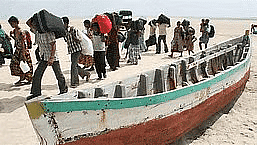 Why in news?
Why in news?
Over 45% of Sri Lankan Tamils in Tamil Nadu’s rehabilitation camps were born in India, per a recent interim report by a State government panel.
Causes of Tamilian Displacement
Ethnocentric Violence: The primary cause of displacement was the ethnocentric violence in Sri Lanka, particularly against the Tamil population. The violence led to significant loss of life and property, forcing Tamils to flee for their safety.
Proximity and Linguistic Commonality: Many Tamils chose India, particularly Tamil Nadu, due to its geographical proximity and the shared Tamil language, making it a more accessible and familiar refuge.
Government Initiatives
Provision of Basic Amenities: Refugees receive free housing, electricity, water, and monthly food rations. Additionally, they get a monthly cash dole.
Educational Support: Access to government schools is provided, along with a monthly stipend of ₹1,000 for those pursuing higher education. One-time educational support includes ₹12,000 for arts and science students and ₹50,000 for engineering students.
Welfare Schemes: Refugees are eligible for various welfare schemes available to the people of Tamil Nadu, including the women’s rights scheme providing ₹1,000 per month.
New Housing: Recently, the Government of Tamil Nadu has constructed new homes for about 5,000 Sri Lankan Tamils.
Bringing Back Dignity
Educational Achievements: The welfare schemes have led to 100% school enrollment and over 4,500 graduates from the camps.
Breaking Caste Barriers: As refugees, Sri Lankan Tamils are categorized under the Refugee category, which has helped in breaking free from caste barriers.
Government Recognition: The renaming of refugee camps to Sri Lankan Tamil Rehabilitation Camps is a step towards restoring the dignity of the displaced population.
Advocacy and Support: Continuous advocacy by organizations like OfERR, support from donors, and political parties have facilitated the patronage extended by the Government of Tamil Nadu and the Government of India.
Legal Limitations: Indian laws currently do not permit local integration by granting citizenship to Sri Lankan refugees.
Economic and Health Crises: The COVID-19 pandemic and the economic crisis in Sri Lanka have slowed down the process of refugees returning to their homeland.
Uncertain Future:
Despite the improvements in their living conditions and dignity, Sri Lankan Tamils in India continue to live with uncertainty about their long-term future.
Amend Legal Frameworks: Advocate for amendments in Indian laws to allow for local integration and citizenship for long-term refugees, providing them with a secure legal status and equal rights.
Strengthen Economic Opportunities: Develop targeted economic empowerment programs, including vocational training and employment initiatives, to enhance self-sufficiency and reduce dependency on state support, ensuring a sustainable livelihood for the refugees.
Mains PYQ
Q ‘India is an age-old friend of Sri Lanka.’ Discuss India’s role in the recent crisis in Sri Lanka in the light of the preceding statement (UPSC IAS/2022)
GS2/International Relations
Invisible suffering of Rohingya refugees
Source: The Hindu
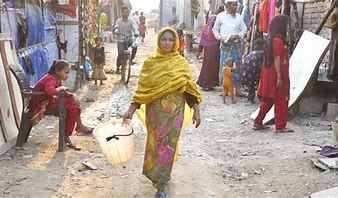
Why in news?
International attention is urgently needed to address the worsening mental health crisis among Rohingya refugees in India.
About Rohingya Sufferings
Trauma and Mental Health: Rohingya refugees in Delhi experience severe trauma, including anxiety, dissociative episodes, and depression, often due to past experiences in Myanmar and ongoing re-traumatization from living conditions and violence in India.
Living Conditions: Rohingya refugees live in shanty-like huts prone to accidental and intentionally set fires, leading to constant fear and re-traumatization.
Discrimination and Legal Status: Officially labelled as “illegal immigrants,” Rohingya refugees face severe discrimination in India. They are denied full access to education, healthcare, legal services, and formal employment opportunities.
Detention and Deportation: Fear of arbitrary detention and deportation is widespread, despite many having UNHCR refugee cards. At least 500 Rohingya, including women and children, are detained in centres across India without criminal charges, some for decades.
Civil Society and Funding: Civil society organizations working with Rohingya refugees face funding challenges due to cancelled FCRA licenses. Many support programs have shut down or reduced operations, leaving few UNHCR-supported organizations to cautiously continue their work.
About unsolved Tibetan issue
Historical Background:
Tibet recognized itself as an autonomous nation under Chinese protection, while China claimed formal incorporation into its borders during the Yuan Dynasty.
The relationship between Tibet and China became increasingly strained, culminating in the 1950 Chinese invasion of Tibet and the subsequent annexation of the region.
Ongoing Challenges:
The Tibetan independence movement continues to push for greater autonomy and recognition of Tibet as a sovereign nation.
The Chinese government maintains strict control over information and suppresses any dissent or opposition to its rule in Tibet.
Current Situation:
Over the last seven years, the Tibetan refugee community in India has dropped by 44 percent, from around 150,000 in 2011 to 85,000, according to Indian government data.
Many Tibetans face economic uncertainty due to limited job opportunities and restrictions on property ownership and bank credit.
Tibetans are not officially recognized as refugees in India, instead being designated as “foreigners” under Indian law.
India has no national refugee law, and its policies are not in accordance with international standards.
Way forward:
Implement National Refugee Law: Advocate for the establishment of a comprehensive national refugee law in India that aligns with international standards, ensuring legal recognition, protection, and access to basic rights and services for all refugees, including Rohingya and Tibetans.
Enhance Mental Health Support: Develop and fund specialized mental health programs for refugees, focusing on trauma-informed care. This includes training local healthcare providers, increasing access to mental health services, and creating safe spaces for refugees to receive consistent psychological support.
Main PYQ:
Refugees should not be turned back to the country where they would face persecution or human right violation”. Examine the statement with reference to the ethical dimension being violated by the nation claiming to be democratic with an open society. (UPSC IAS/2021)
|
63 videos|5408 docs|1146 tests
|
FAQs on UPSC Daily Current Affairs - 20th June 2024 - Current Affairs & Hindu Analysis: Daily, Weekly & Monthly
| 1. What is the significance of Pobitora Wildlife Sanctuary in India? |  |
| 2. How is the European Commission (EC) involved in environmental projects in India? |  |
| 3. What is the NHRC Notice to Centre regarding worker rights violation in Haryana about? |  |
| 4. How does CRISPR Cas9 gene therapy contribute to treating Sickle Cell Disease? |  |
| 5. Why was India's $10 million contribution to the Global Digital Health Initiative delayed? |  |
















